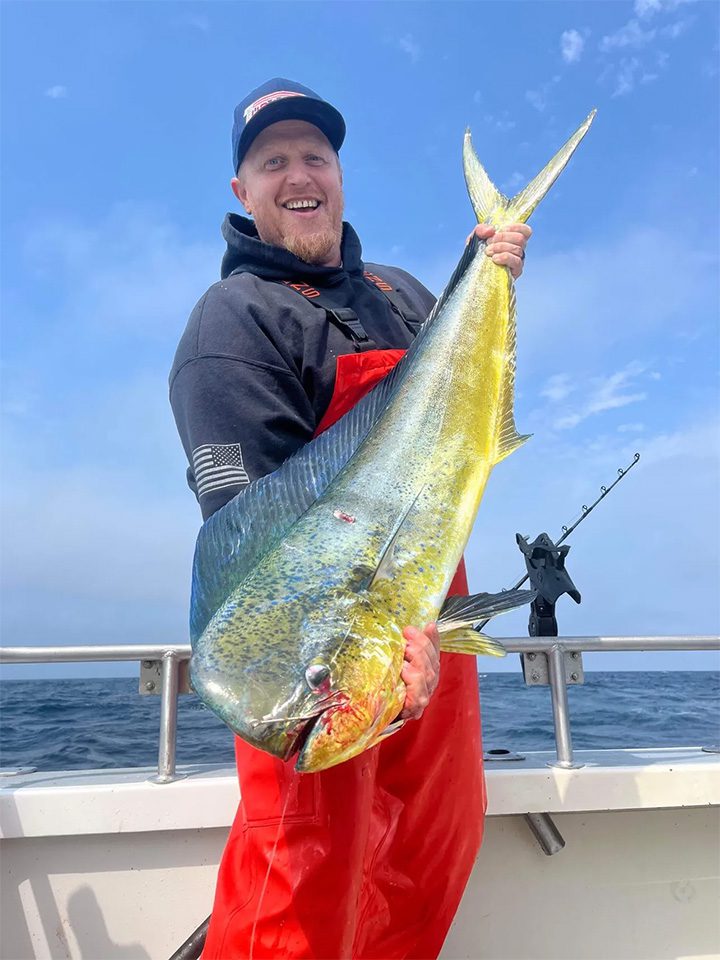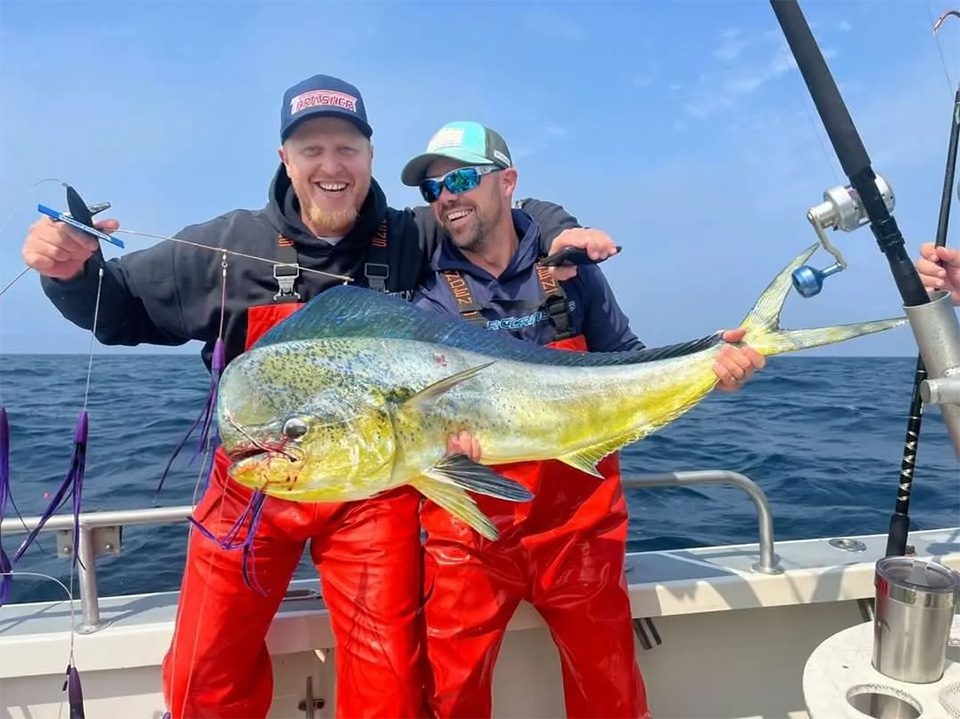A 20-pound mahi might not be surprising off the coasts of Florida or Mexico, but this 21-pound, 48-inch-long dolphinfish is a super rare catch off the coast of Washington State. It’s the largest one anyone’s ever caught there.
Angler Wade La Fontaine caught his state record mahi 42 miles out in the Pacific off the Washington coast on Aug. 25. He was on a charter trip with Capt. Keith Johnson aboard the Tunacious. They were trolling for tuna with plastic squid lures behind a spreader when the mahi hit.
Upon landing at the dock in Westport, Washington, the dolphinfish was checked by a Washington Department of Fish and Wildlife biologist, then weighed on a certified scale. After review, the record was certified on Aug. 30.
Dolphinfish are sporadically caught by recreational and commercial fishers targeting albacore tuna and other species off the Washington and Oregon coasts, including a handful recorded last year at the ports of Westport and Ilwaco and at least two this summer.
“Most mahi mahi caught off our coast are smaller fish in the 6- to 12-pound range,” read a WDFW press release. “La Fontaine’s fish — which was 48 inches long and 40 inches to the inside fork of the tail — was more reminiscent of large dolphinfish caught in warmer waters off southern California, Mexico and Hawaii.”
The previous Washington state record weighed 16.27 pounds. It was caught by Albert DaSilva in 2013.
The charter reported 70-degree water temperature in the area where the fish was caught, which is warm, even for the warmer offshore currents, though not unprecedented especially during El Nino years, explained the release.
“I’m blessed beyond comprehension,” La Fontaine said. “I’ll be getting another tattoo of a mahi!”
Albacore tuna are the primary target for Pacific Northwest offshore anglers, with large schools of these “longfin tuna” abundant off the coast of northern California, Oregon, Washington, and British Columbia in the summer and early fall. Albacore are found in the blue water, a mass of warmer Sea Surface Temperature water typically found off the West Coast of North America during summer and fall, and off Southern California year-round.
For more information, go to https://wdfw.wa.gov/

